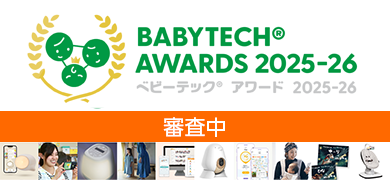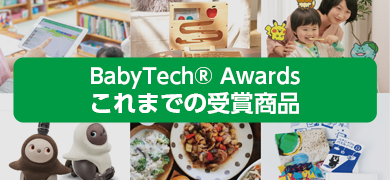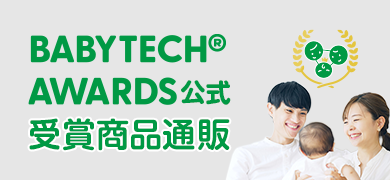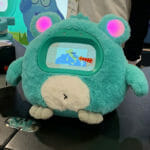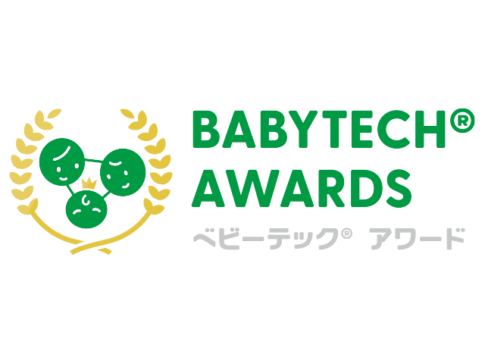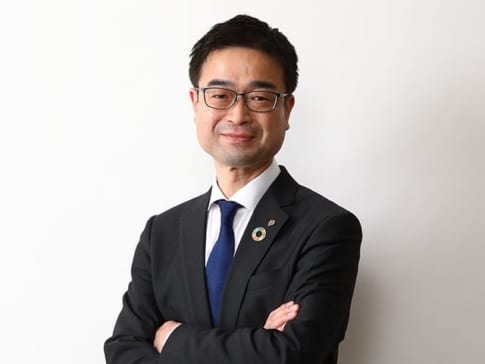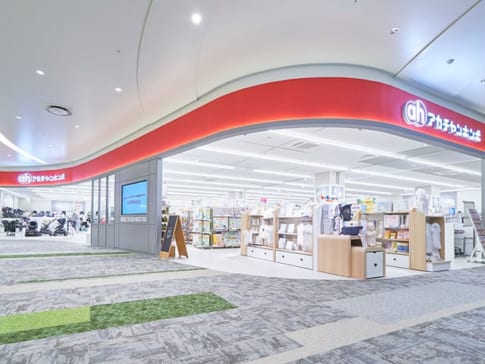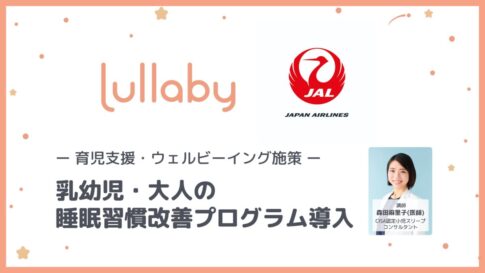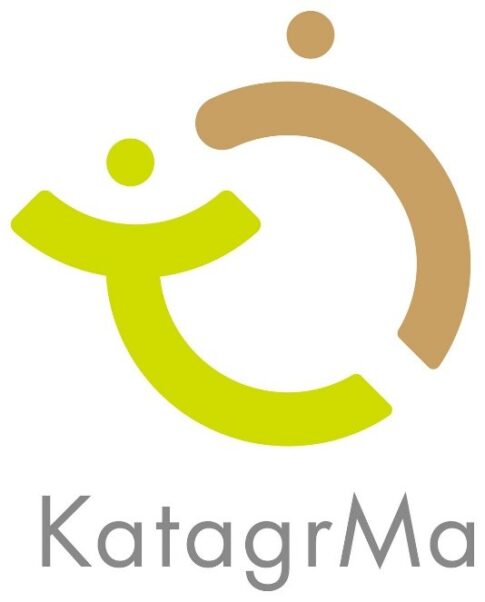- Development started when team members met with many infants suffering from dehydration in the Republic of Palau.
- A sensor attached to the pacifier determines the baby's "water content.
- If you are "dehydrated," your smartphone will notify you and advise you on the appropriate treatment.
(We spoke to...)
Team Rota++.
Eitaro Yamatsuta, Leader
Born out of a "chance encounter" at Stanford University.
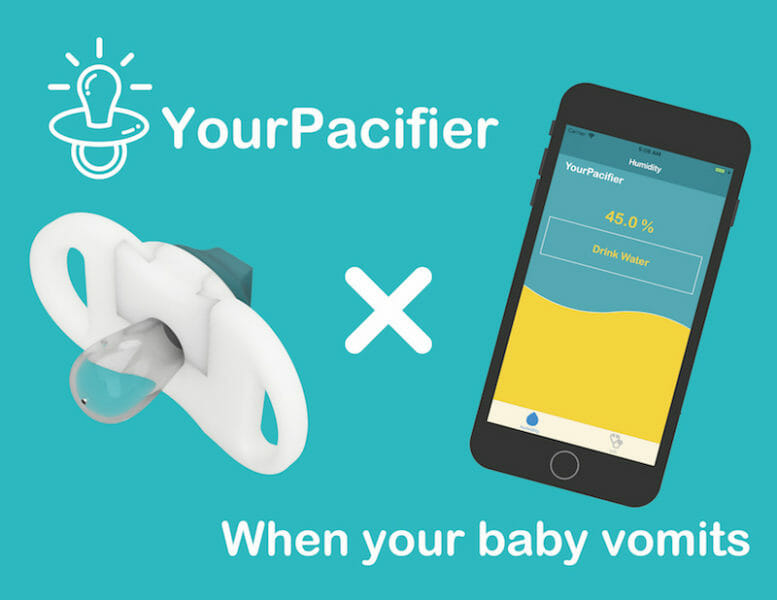
Editorial:What inspired you to develop Your Passifier?
Mountain ivy: The inspiration for the development of Your Pacifier came from a visit to a hospital in the Republic of Palau by then-medical student Teramoto, a member of Team Rota++, for research and training purposes, where he saw many babies being brought in with "dehydration symptoms. ......
Editorial: How did development proceed from there?
Mountain ivy: At Stanford University's Healthcare Hackathon (an event for medical engineers), Teramoto posed the question, "Is there any solution to rotavirus-induced vomiting and diarrhea in developing countries?" I raised the question. Members who attended the event and were interested in the issue he raised became "Team Rota++". Your Pacifier" was born out of the discussion among the members, "What about this kind of idea" and "I have this kind of technology. After returning to Japan, we continued to make improvements, but it was difficult because the members were scattered all over the country. Software development can be completed on the Internet, but hardware development, including the feel of the hardware, cannot be completed unless we actually get together to improve it. It was also difficult because the student members were busy with their day jobs (i.e., schoolwork) and there were no members who were strong in sensors and circuits.
Used differently in "medically developed" and "medically developing" countries
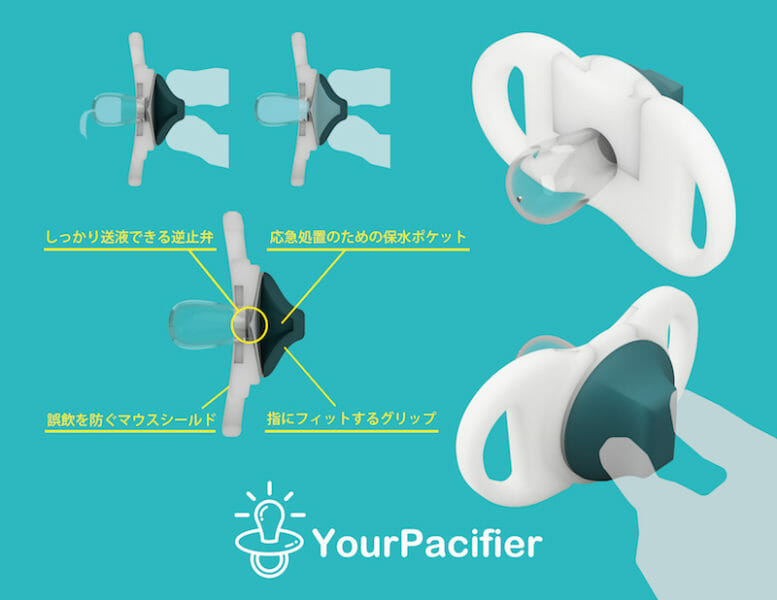
Editorial:How do I use Your Passifier?
Mountain ivy: Like a thermometer, the idea is to take measurements at pinpoint times when they are needed. We envision the pacifier with sensor being placed in the baby's mouth when something is "wrong ......," such as when the baby vomits or has diarrhea.
Editorial: Where is it supposed to be used?
Mountain ivy: Basically, it is "home" or "daycare". The primary purpose of the system is for you to use it there to determine whether you should take your child to the hospital right now or not. For example, in medically advanced countries such as Japan, Europe, and the United States, there are often cases where parents worried about their babies vomiting in the middle of the night rush them to emergency hospitals immediately anyway. In reality, however, in most cases, the treatment at the hospital is simply to "give her some water and see what happens. However, if parents have to go to the emergency hospital in the middle of the night every time, it is a huge burden for the parents, and it is also a cause of pressure on the government's medical costs. Therefore, the role of "Your Pacifier" is to provide parents with peace of mind by measuring fluid levels and presenting appropriate treatment methods. For example, "Give him some fluids and see what happens. Just to be safe, please see a doctor when a general hospital opens," through the smartphone.
Editorial: How do you envision it being used in a place like Palau?
Mountain ivy:Conversely, in places such as Palau, where vomiting and diarrhea due to water poisoning and food poisoning are commonplace, parents often overlook serious symptoms in their babies. Therefore, the role of "Your Pacifier" in such cases would be to issue a "Take him to the hospital now" notice, if necessary.
Editorial: Can you tell us about the materials and manufacturing process of Your Pacifier?
Mountain ivy:The part that is held in the mouth is made of silicon rubber, the same as a regular pacifier, and the handle is made of PLA resin (polylactic acid) and other materials that can be formed using a 3D printer. However, since we are still in the prototype stage, the design and materials are continually changing. Including software improvements, the number of prototypes is close to 20.
Your Passifier is composed of three elements.
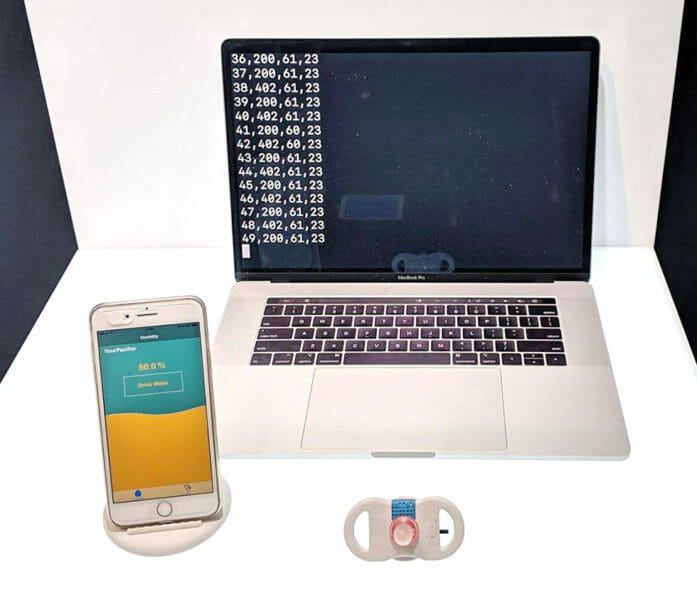
Editorial: What is the overall structure of Your Passifier?
Mountain ivy:The "Your Pacifier" consists of three components: a pacifier (sensor), an application to be installed on smartphones used by parents, and a dashboard to be installed in local hospitals and medical departments of national and local governments. Of these, the "dashboard" collects location and other information from the smartphones of users who use Your Passifier in the area, creating a database that can be visualized. The "Dashboard" is a database that collects location information from the smartphones of users who use the YourPersifier in a certain area and visualizes the trends of babies in the area. This could be used to detect outbreaks of viral infections and educate the public about prevention.
Editorial: What is the "smart phone app?"
Mountain ivy: First, the smartphone application displays the results of the water content measured by the "pacifier (sensor)". This is like the "body temperature" measured by a thermometer. Next, the system goes into "interview mode" according to its measured water content. This is based on the "questions to determine the level of dehydration in babies" published by the Pediatrics Society and other organizations, and is in the form of asking the patient to answer questions such as "How is the crying? Based on the results of these questions, the application determines whether the baby should be taken to the hospital immediately or should be kept under observation.
Further development of the device in response to parental requests
Editorial:What is the current state of development and what are your plans for the future?
Mountain ivy: Since the other members of Team Rota++ have become busy with their studies, started working, or started working as doctors, we are now a two-person team, consisting of myself and the designer. We also conducted a survey of parents and guardians, and found that some of the comments we received about the current system that uses pacifiers as moisture sensors were: "It can only measure the amount of moisture when the pacifier is held in the mouth," "Babies don't like it and spit out the pacifier," "I'm worried that using a pacifier will make their teeth misshapen," and "I don't want to use a pacifier for my child's teeth. "I'm worried that using a pacifier will damage the shape of their teeth. Furthermore, since it was reported in the news that babies can become dehydrated not only from diarrhea and vomiting, but also from the "summer heat," we are working to improve the system to be able to measure water content more continuously. As for the shape of the sensor here, we are considering a wristband type, etc.
<After the interview
According to Mr. Yamatsuta, he would like to solicit investment and spread the use of the current technology once it is ready to be patented. Also, because focusing on developing countries at first would lead to a financial deadlock, he would like to first aim for widespread use in developed countries in Europe and the United States. As for domestic expansion, he said, "In Japan, there is a strong sense of value that 'parental love is the best! There is a strong sense of resistance to baby tech in Japan," he said. ...... However, we feel that expectations for BabyTech are steadily rising in Japan, especially among the younger generation. We would very much like to see the commercialization of this product in Japan.

